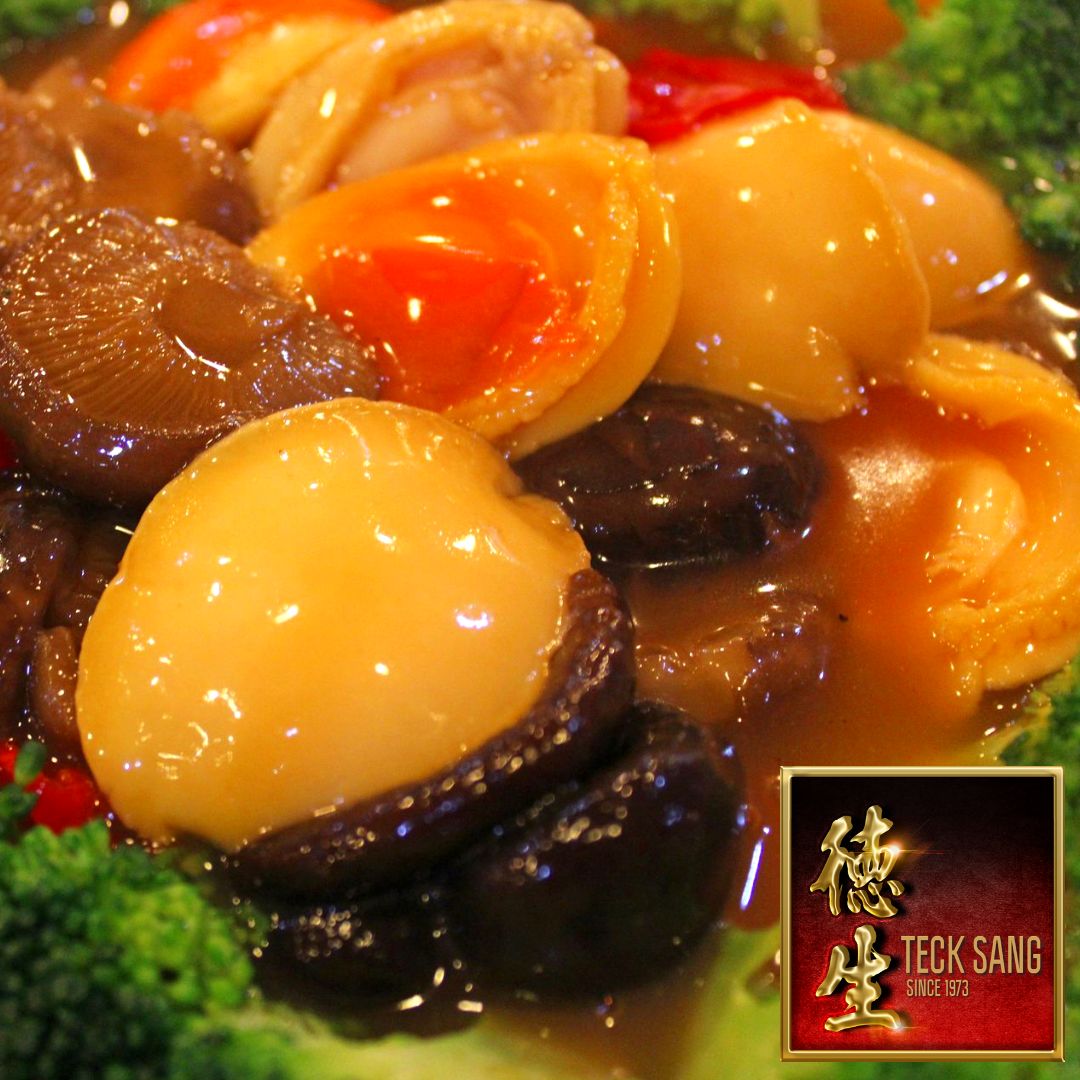Introduction to Canned Abalone
Canned abalone is a delicacy known to many in the Chinese Community as a luxurious food item. It holds a fascinating history and cultural significance that often goes unnoticed by those who merely appreciate its taste. While some may be aware of this exotic mollusk being preserved in a can, few may know the intriguing journey that led to its popularity. From its humble beginnings as a traditional Chinese ingredient to its rise as a status symbol of wealth and prosperity, canned abalone has become an integral part of Chinese New Year celebrations, symbolizing good fortune and abundance. In this article, we will explore the history behind canned abalone, unravel the reasons why people eagerly purchase it, and unravel its deep-rooted significance during the joyous festivities of Chinese New Year.
The History of Canned Abalone
Canned abalone revolutionizes consumption of traditional food into modernity in Chinese culinary history. Traditionally consumed for thousands of years, abalone, a marine snail prized for its flavor and texture, became more accessible with the advent of canning technology in the early 20th century. This innovation transformed abalone into a symbol of luxury and prosperity, especially popular in the 1950s and 1960s among the emerging middle class. Today, it remains a cherished delicacy during celebrations like weddings and Chinese New Year, representing good fortune and abundance.
Canned abalone embodies significant cultural value in Chinese society, symbolizing wealth, prestige, and good luck. Its refined taste and rarity are associated with prosperity and longevity, while its texture and appearance signify strength and resilience. Serving canned abalone on special occasions is considered auspicious, enhancing the meal with blessings for those who partake. The historical and cultural importance of canned abalone makes it an enduring part of Chinese culinary heritage.
What is Canned Abalone?
Abalone is a type of sea snail that belongs to the Haliotidae family. It is known for its unique shell, which is often referred to as the "ear shell" due to its shape resembling that of an ear. Abalone is considered a delicacy in many cultures and is highly prized for its tender meat. It is often described as having a mild, slightly sweet flavor with a firm and chewy texture. The taste of abalone can vary depending on the species and the way it is prepared.
When it comes to canning and preparation, abalone undergoes a meticulous process before it can be enjoyed. Fresh abalone is typically shucked from its shell, cleaned, and tenderized to achieve a more desirable texture. Canned abalone, on the other hand, is cooked and packed in a can, often with added broth or sauce for flavor. The canning process involves pressure cooking the abalone to ensure it is properly preserved. This extended cooking time can affect the texture of the meat, making it more tender compared to fresh abalone.
The differences between fresh and canned abalone are primarily in terms of texture and taste. Fresh abalone has a slightly firmer texture and a more pronounced natural flavor. Its taste can be enhanced by cooking it in various ways, such as grilling, sautéing, or incorporating it into seafood dishes. Canned abalone, although more tender, may have a slightly milder flavor due to the added broth or sauce. However, it is convenient and readily available for consumption, making it a popular choice for those who do not have access to fresh abalone or prefer a softer texture.
The Popularity of Canned Abalone in Chinese Cuisine
In Chinese culture, abalone has long held a prominent place. Known as "Bao Yu," it's seen as a symbol of good luck and prosperity, and it's sometimes used in expensive Yusheng tosses to ring in the Chinese New Year in Singapore.
The Role in Chinese New Year
Canned Abalone holds great symbology and significance during Singapore's Chinese New Year festivals. Abalone is considered a delicacy and a symbol of wealth and prosperity in Chinese culture. The canning process preserves the abalone's quality and ensures its availability throughout the year, making it a popular gift during the festive season. The circular shape of the can represents unity and completeness, symbolizing family harmony and reunion during the New Year celebrations. Additionally, the abalone's spiral pattern signifies good fortune and abundance. By gifting canned abalone, individuals express their wishes for financial success and prosperity in the coming year, making it an essential part of Singapore's Chinese New Year festivities.
How is Canned Abalone Cooked?
Canned abalone can be cooked in several different ways, depending on personal preference and the desired outcome. Here are two popular methods of cooking canned abalone:
1. Stir-frying:
- - Drain the canned abalone and rinse it under cold water.
- - Slice the abalone into thin pieces or strips.
- - Heat oil in a frying pan or wok over medium heat.
- - Add the sliced abalone to the pan and stir-fry for about 2-3 minutes until it becomes slightly golden.
- - Add vegetables such as bok choy, bell peppers, or mushrooms if desired.
- - Season with soy sauce, oyster sauce, or any other preferred stir-fry sauce.
- - Continue stir-frying for another 2-3 minutes until the abalone and vegetables are cooked through.
- - Serve hot over steamed rice or noodles.
2. Braising:
- - Drain the canned abalone and rinse it under cold water.
- - Place the abalone in a saucepan or pot.
- - Add enough stock or broth (chicken, vegetable, or seafood) to cover the abalone.
- - Bring the liquid to a boil, then reduce the heat to a simmer.
- - Add flavorings such as ginger, garlic, green onions, or Chinese spices.
- - Cover the pot and let it simmer for about 30-45 minutes, or until the abalone becomes tender.
- - Season with salt, soy sauce, or other seasonings according to taste.
- - Serve the abalone and broth as a soup or alongside steamed rice.
Remember, these are just two common methods, and there are numerous other ways to cook canned abalone, such as grilling, steaming, or adding it to soups and stews. The choice of cooking method will depend on personal preference and the desired flavor and texture of the dish.Canned abalone is ready to eat but can also be used in a variety of dishes.
Traditional Chinese Recipes
Popular traditional recipes include braised abalone with mushrooms and sea cucumber, abalone porridge, and abalone stir-fry.
Modern Interpretations
There are many experimentations done with Canned Abalone. The Brand, Chuen Jia Fu, has begun experimenting with World-Class Chefs with innovative concept dishes, such as in risottos, pasta, and even in sushi.
Tips for Preparation
When using canned abalone, it's crucial to heat it gently to preserve its texture. Also, the broth in the can should not be wasted. It is a flavor powerhouse that can be used in soups or sauces.
Where to Buy Canned Abalone
Online Options
You can purchase canned abalone from a variety of options online. One of the best places in Singapore to buy canned abalone from is Teck Sang with their wide variety of different high quality canned abalone from around the world, including Australian, Mexican, South African, and much more. Their abalones make the perfect gifts for Chinese New Year and for cooking.
Physical Stores
Most of the physical stores, such as NTUC, Eu Yan Sang and Cold Storage is easily accessible and do stock canned abalone. Their range is more limited.
How do I Quality Check Canned Abalone?
When purchasing, pay attention to the color, which should be light to golden, and the aroma, which should be fresh and sea-like.
Understanding Labels
Labels on canned abalone can provide critical information about the product.
Abalone Size
The size of the abalone is indicated by the number of pieces per can. Fewer pieces mean larger abalone.
Country of Origin
Abalone is harvested worldwide, and the taste varies by region. Australian and South African abalone are particularly prized.
Sustainability
Given overfishing concerns, it's important to choose abalone from sustainable fisheries. Look for certifications like the Marine Stewardship Council (MSC).
Experience the Convenience and Deliciousness of Canned Abalone at Teck Sang Singapore
Canned abalone is not just a food product. It is a piece of culinary history, a symbol of wealth and prosperity, and a versatile ingredient in the kitchen. Whether you're seeking a taste of Chinese culture, an exotic addition to your dishes, or a convenient way to enjoy seafood, canned abalone is worth exploring. At Teck Sang Singapore, we offer a wide range of options, from the classic abalone tin to more unique and upscale brands. No matter what your tastes, budget, or occasion you'll be sure to find something to suit your needs.
If want to give canned abalone a try or want to bring one home as a gift, you'll be thrilled to know that at Teck Sang, whether you're looking for a quick and easy meal or a special treat to impress your guests, we've got you covered with a wide selection of top-quality canned abalone options.
When it comes to choosing the right canned abalone for you, there are a few key factors to consider. One of the most important is the type of abalone. Check out that post for more details.
FAQs
What does canned abalone taste like?
Canned abalone has a tender, meaty texture and a subtle, savory flavor often described as a blend of scallops and foie gras.
How do you eat canned abalone?
You can eat canned abalone straight from the can, in salads, or heat it and add it to various dishes.
How long does canned abalone last?
If unopened and stored in a cool, dry place, canned abalone can last for several years. Once opened, it should be eaten within a few days.
Is canned abalone expensive?
Abalone is a luxury seafood item, and the price reflects this. However, canned abalone is generally more affordable than fresh.
Why is abalone considered a delicacy?
Abalone is prized for its taste and texture. Also, because abalone grows slowly and is hard to farm, it is relatively rare, adding to its status as a delicacy.



